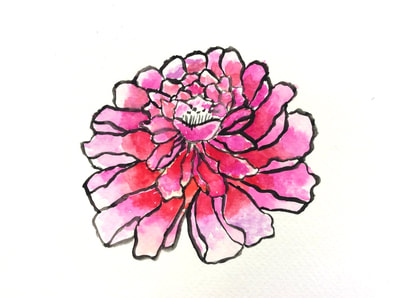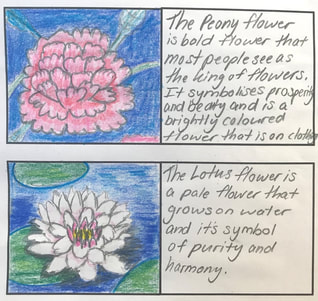Peranakan Colours Meaning
He was told the piece came from the Peranakan a word meaning locally born in the Malay tongue. Falling in Love with Peranakan Culture at The Intan.

Peranakan Culture Multidisciplinary Unit
I sort of see seven as a quite a magical number says the investment banker turned international hotelier.

Peranakan colours meaning. As mentioned earlier nearly a third of the tiles you see in Singapore came from Japan in the early part of the 20 th century. Color Symbolism in Chinese Culture. Straits Chinese porcelain is generally brighter colored than any other export porcelain made in China.
The Phoenix which is widely represented on Peranakan porcelain is a celebration of femininity marriage and grace. Red and pink represent life and celebration. They aim to provide customers with the highest quality and tasty Nyonya Kueh.
A first hint is the choice of colour schemes for the fabric which is bright not sombre and rather colourful reminiscent of the colourful old Chinese enamelled porcelain called Nyonyaware which is synonymous with the Peranakans. Its association with the remarkable culture of Peranakan folk or Baba-nyonyas the meaning and intentions behind Peranakan motifs and symbolism are of universal application. Theres more than one colour PHOTO.
The colours of red yellow blue pink green and white all have different symbolisms in the Peranakan culture. Pineapples - commonly known as bolou with the bo meaning abundance and richness. The Straits Times file.
Is there any significance behind the patterns and colours commonly seen on Peranakan tiles. When Cheng Siew passed away in 1919 all the deities and mirrors of the house would have been covered with white. Only the best and freshest ingredients are used to make the products.
I was immediately attracted by the nostalgic sight of the Tam Puis or spittoons and ornate tiffin carriers bursting with colours lined up along the long. Perhaps the most iconic of all is female Peranakan wear. Many of the loyal customers would attest that the products bear the great authentic taste of the past.
The local kuih some are Malay and some are Nyonya or Peranakan comes in. The lotus is one of the most significant flowers in the. Why is it called the.
Peranakan is an Indo-Malay word meaning child of descendant cross-breed or native-born depending on what translation you take to heart. Sitting in the heart of Joo Chiat The Intan is a two-storey shophouse that boasts a rich and diverse collection of elaborate antiques. A pairing of a brightly coloured Indonesian batik and an intricately embroidered blouse The Nyonya kebaya is dazzling with colours and floral motifs that embody an array of meanings.
The word Anak literally means child or descendant in Indonesian. The base color is often a bright yellow green pink etc. The Peony in its floral splendour reminds us of the importance of honour and virtue.
A combination of rose pink and turquoise were most popular though the flamboyant cultural colour palette didnt end there also including golden yellows cobalt and regal purples among others. Hence five of the most popular colors in China also corresponded to these 5 Elements namely. The museum does not focus on any particular timeline eager to avoid the nostalgia that many associate with the Peranakan lifestyle for example Singapore in its pre-economic boom kampong days.
Some of the items offered today as Straits Chinese. GEORGE TOWN March 27 Soft creamy colourful and sweet our many varieties of Malaysian kuih are the result of an interesting mix of delicacies with Malay and Peranakan origins. Production of Nyonyaware ceased.
To fully understand their roots we must go back hundreds of years to the. Sep 21 2012 - Bright bold beautiful - thats Peranakan Straits Chinese design. Firstly it is a prime number.
Nyonya Colors specializes in premium homemade quality Nyonya Kueh and delights. But for owner Christopher Ong the number seven has a deeper meaning. Let us study what different colors mean in Chinese culture.
Due to their symbolic meaning in Peranakan culture the phoenix and peony have a more prominent position than in other Chinese porcelain wares made for use in China itself. The Japanese manufacturers made these tiles specially for their Chinese and Peranakans customers in South East Asia. Popular in southern China and Singapore where they grow in warmer weather this tropical fruit can often been seen during Chinese Lunar New Year.
The Peranakans A Malay term meaning locally born the Peranakans are descendants of marriages between the local Malays and foreign traders who settled down in South East Asia centuries ago. Even the cakes kuih eaten during the funeral would be blue and white in colour. The Peranakan community in Singapore predominantly traces their lineage from Chinese traders although there are also small Peranakan communities such as the Hindu Peranakans Chitty and.
Secondly ask yourself how come there are seven days in a week. It had the same color. Just as the Five Elements Theory of Metal Fire Water Wood and Air play an important role in influencing many of the Chinese beliefs and customs the color theory is also based on the 5 elements.
Singapores Peranakan Culture Discover a whole new side to Singapores Asian heritage via the Peranakans pronounced per-rah-nah-kahns a fascinating blend of cultures from the region. Brooches jewellery and beaded sandals complete the classic Nyonya apperance. White represents death and ghosts to the Chinese people and are often found at funerals.
And theres a meaning to them. Here we see art painted in primary colours that contrast so well with the dark rigged wood panel. Common Chinese Flower Symbolism.
Blue was a colour that became synoymous with Peranakan funerals. Why are there seven colours in the rainbow. It had the same color scheme as the plates and lunchboxes at his home.
Blue uniforms are for flight stewardesses green for leading. It is very interesting how there is such a different in colours used. Peranakan art is distinguished by its contrasting colour palette.
See more ideas about chinese design design penang. Strawberries Grapes - As these are cold-weather fruits and definitely not usually seen in the tropics I think this is an example of typical Chinese Peranakan. While white flowers represent innocence and purity in the American culture they are the opposite in the Chinese culture.
The kebaya is still worn. The colours featured in the altar cloths are more vibrant than that of the china as it is depicting power and strength for ceremonies while the china was used for family dwellings and remembrance of their culture. The sign of the maker a Chinese name also accentuates the notion that this cloth was meant mainly for the Chinese Peranakan market.
So who were the Peranakan and when and where did they come from. While the decorative motifs have a strong feminine Chinese heritage such as peonies butterflies and phoenixes the colours are distinctively Peranakan. Often depicting nature it is a stark difference to its counterparts in mainland China as the Peranakan culture is a fusion between Malay Chinese and often western influences.

Candlenut X Supermama Peranakan Mamezara Heritage Inspired Plate Ware For Modern Everyday Use Nookmag
How To Experience Peranakan Culture In Singapore

Peranakan Culture Multidisciplinary Unit

A Tale Of Tiles The Story Of Peranakan Tiles Forbidden Hill

How To Experience Peranakan Culture In Singapore

A Tale Of Tiles The Story Of Peranakan Tiles Forbidden Hill

Posting Komentar untuk "Peranakan Colours Meaning"